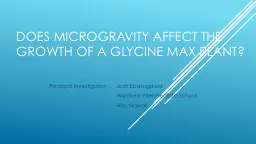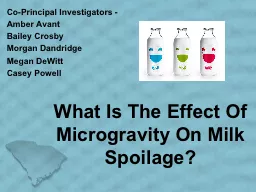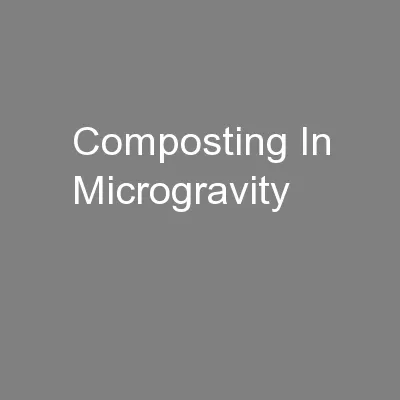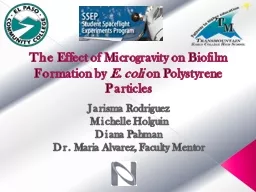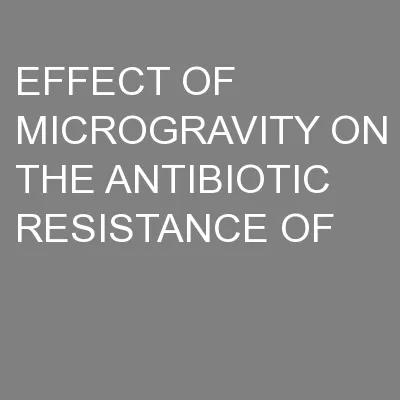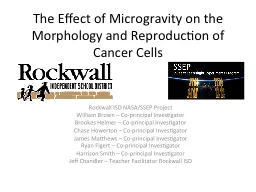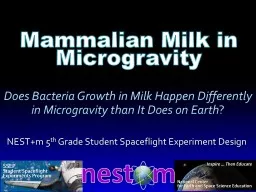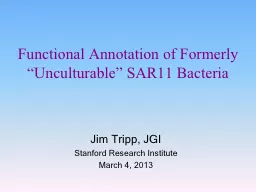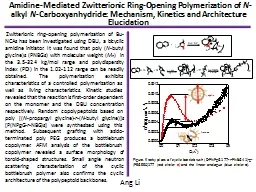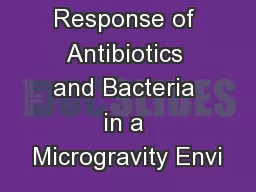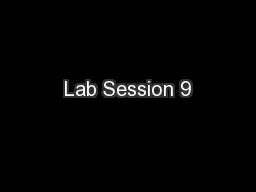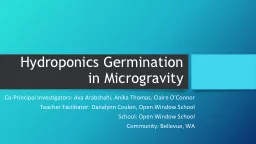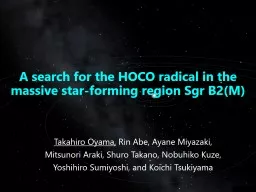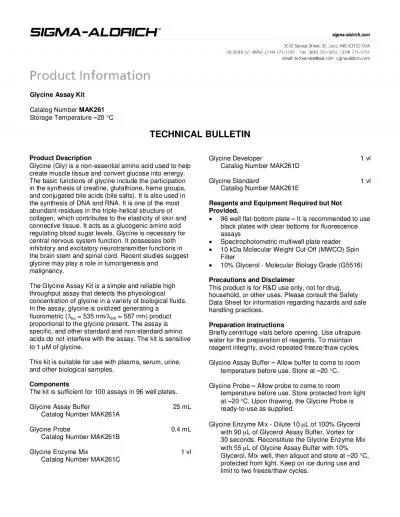PPT-Does Microgravity Affect the Growth of a Glycine max Plant?
Author : yoshiko-marsland | Published Date : 2016-04-28
Principal Investigator Josh Ebesugawa Waiakea Intermediate School Hilo Hawaii The Problem High cost involved in sending an astronaut into space In 2016 Russia
Presentation Embed Code
Download Presentation
Download Presentation The PPT/PDF document "Does Microgravity Affect the Growth of a..." is the property of its rightful owner. Permission is granted to download and print the materials on this website for personal, non-commercial use only, and to display it on your personal computer provided you do not modify the materials and that you retain all copyright notices contained in the materials. By downloading content from our website, you accept the terms of this agreement.
Does Microgravity Affect the Growth of a Glycine max Plant?: Transcript
Download Rules Of Document
"Does Microgravity Affect the Growth of a Glycine max Plant?"The content belongs to its owner. You may download and print it for personal use, without modification, and keep all copyright notices. By downloading, you agree to these terms.
Related Documents

